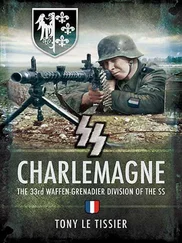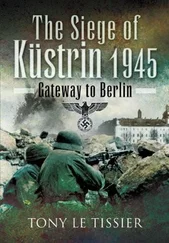The Oderbruch Battlefield
The Saar-Moselle Triangle: Schloss Thorn & The Orscholz Switch
The Second Battalion, Grenadier Regiment 1234, at Rathstock and Tillery’s Escape after the Soviet Attack of 2 March 1945
The Second Battalion, Grenadier Regiment 1234, at Solikante
The Original Deployment of Grenadier Regiment 1234 and Tillery’s Retreat from Solikante to Gottesgabe
Tillery in Wilmersdorf
The Deployment of the 2nd Battalion, Fahnenjunker-Grenadier Regiment 1242, on 7 March 1945
The Deployment of the 2nd Battalion, Panzer-Regiment ‘Müncheberg’ on the 21–23 March 1945
The Defence of Seelow
Breaching the Stein-Stellung – Routes of Tams, Wittor & Averdieck
Rogmann’s Main Area of Activity
Rogmann’s Mortars in East Berlin
The Reichstag Battle
First published in 2001 by Sutton Publishing
This edition first published in 2005
Reprinted 2006, 2007
The History Press
The Mill, Brimscombe Port
Stroud, Gloucestershire, GL5 2QG
www.thehistorypress.co.uk
This ebook edition first published in 2013
All rights reserved
© Tony Le Tissier, 2001, 2005, 2013
The right of Tony Le Tissier to be identified as the Author of this work has been asserted in accordance with the Copyrights, Designs and Patents Act 1988.
This ebook is copyright material and must not be copied, reproduced, transferred, distributed, leased, licensed or publicly performed or used in any way except as specifically permitted in writing by the publishers, as allowed under the terms and conditions under which it was purchased or as strictly permitted by applicable copyright law. Any unauthorised distribution or use of this text may be a direct infringement of the author’s and publisher’s rights, and those responsible may be liable in law accordingly.
EPUB ISBN 978 0 7524 9469 2
Original typesetting by The History Press
1 This was an ancestor of the General Walter von Seydlitz-Kurzbach captured at Stalingrad, who became Chairman of the ‘Bund Deutscher Offiziere’ (League of German Officers) and Vice-President of the ‘Nationalkomitee Freies Deutschland’ (National Committee for a Free Germany), giving rise to the term ‘Seydlitz-Truppen’ given by the Nazis to those German prisoners of war who did propaganda work and even fought with the Red Army against the Wehrmacht, although he totally disassociated himself from those activities and was later exonerated by a West German court after the war.
2 Hans-Ulrich Rudel specialised in tank-busting with cannon-equipped Stukas, often working at turret-height and was credited with 519 Soviet tanks destroyed and 800 damaged, as well as the sinking of a cruiser and the severe damaging of a battleship. He was to lose a leg in action that same month and was treated at the Zoo Flak-tower hospital in Berlin.
1 However, it was because the commander of the 11th Panzer Division felt so strongly that it was being misemployed here, the senior LXXXIInd Corps being unused to dealing with armoured formations, that he had appealed directly to the Inspector of Panzertruppen for the division to be relieved. In fact a battalion of Panzergrenadier Regiment 111 remained behind with some tanks to bolster the 256th Volksgrenadiers.
1 In fact the German counter bombardment separated the Soviet infantry from their accompanying tanks by the time they reached Route 112 and their advance came to a halt just beyond Rathstock.
2 I have a report on this by Herbert Tegeler, a platoon commander in the neighbouring 2 Company, commanded by Lieutenant Dr. Hoffmann, which broke through north of Rathstock to arrive back in Sachsendorf intact that same night.
3 These also served as rain-capes.
4 These foundations were usually of ‘Feldsteine’, ice age boulders recovered from the fields, and were immensely strong.
5 However, Sachsendorf was retaken by the Germans and was in their hands as a major strongpoint until the 16th April.
6 This was the honour guard battalion from Berlin.
7 Shortage of brass led to the introduction of steel cartridges, which had to be protected from rust with lacquer, but the latter melted once the breech of a weapon became hot and caused the cartridges to stick. Machine gunners would have to change their barrels after every burst and riflemen to force open the bolts with their entrenching tools, a tedious business that drastically slowed down the rate of fire.
8 The Po-2 was armoured against infantry fire.
9 Marshal Zhukov had ordered every available gun to be fired, whether they were targeted or not, in order to add to the psychological pressure.
10 Otherwise known as ‘Seydlitz-Troops’.
11 Probably Gielsdorf.
12 A hand held anti-tank weapon.
13 Hoppegarten is a famous German racecourse with its own stables and training facilities.
14 The Volkssturm was raised by a decree of 25 September 1944 forming a Home Guard under Nazi Party auspices from all men aged 16 to 60 capable of bearing arms. The Hitler Youth were also armed and exploited in the defence of their country.
15 Presumably where Frankfurter Allee crosses the S-Bahn ring.
16 The official Nazi Party newspaper.
17 Now Bielefelder Strasse.
18 This was the Charlotten Bridge over the Havel, which had been severely damaged when an ammunition truck blew up while crossing. Horst Zobel (see The Bridge at Golzow) led the break-out here in an armoured personnel carrier, the break-out having been organised by Luftwaffe Major General Sydow.
1 The Division ‘Feldhernhalle’ was the only SA (Sturmabteilung) formation in the Wehrmacht. Its replacement battalion had been sent to the Oder front as an emergency measure, much against the wish of the SA leadership, which kept pressing for its return. The battalion ended up with only 60 men in the line.
2 Only a few of these target areas have been identified on the ground, as per the drawing.
1 The present Seelow Museum was originally established by the Government of the German Democratic Republic as a ‘Memorial to the Liberation’.
2 Known as the ‘Mistel’, its target were the Soviet bridges.
3 The ‘Stein-Stellung’ was a prepared but unmanned, main defensive strip.
4 Presumably Panzerjäger Tiger Ausf B Jägdtigers of the SS Heavy Panzer Battalion 502, which had been lagered nearby. Heavily armoured and armed with an 88mm gun, these were in fact formidable fighting vehicles.
5 The Headquarters of the XIth SS Panzer Corps (see ‘The Siege of Klessin’) had been located here.
1 This would have been already in existence as part of the ‘Stein-Stellung’, the second defensive belt, unmanned and relying on survivors from the first defensive belt to man it in due course.
Читать дальше












